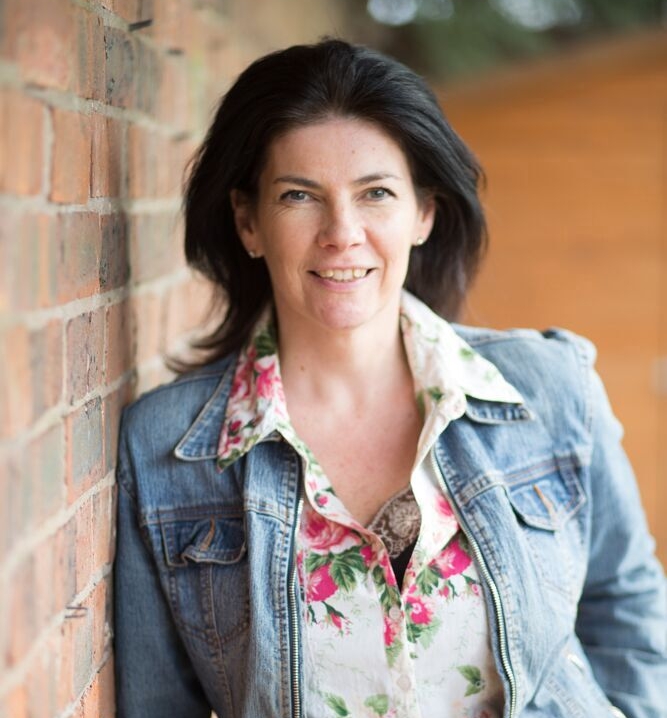An Anxious Weight – Why Emotional Intelligence Lessons Must Be Part Of Teachers’ Daily Routines

With children’s mental health continuing to be a big issue, Avril McDonald reflects on how learning to live with anxiety disorders inspired her to bring emotional intelligence into the mainstream…

The night we experienced what we would later learn was my first panic attack, my mother said that she thought my heart was about to explode right out of my shoulders.
I was eight years old and on holiday in New Zealand when our group of four families had all piled into a natural hot pool one evening for a swim. I was just as excited as the rest of the children, but as I changed into my swimming costume, a strange feeling came over me.
Much like a dog, the old brain is most useful to us if we can teach it and train it using our rational new brain. I learnt over time that a panic attack was just my old brain going into chemical overdrive, and that my new brain could learn some great strategies to patiently sit with it, rationalise what was happening and use practised techniques to calm it down.
Impossible task
We live in an incredibly fast-paced, stressful and distracting world, and we’re seeing an increase in young children diagnosed with anxiety, autism, Asperger’s and ADHA that’s alarming. According to the Office for National Statistics, one in 10 children in the UK aged between 5 and 16 has a clinically diagnosed mental health disorder, with data suggesting that those numbers are on the rise. In an already overcrowded curriculum crammed with assessment, goals and departmental expectations, it’s still down to teachers to raise children’s performance while juggling all of these new challenges in mental health,which can seem near impossible. I certainly don’t think that there’s a one-size-fits-all solution, or that understanding a bit about how our brains work and practising ways to self-regulate our emotions will solve all our mental health issues – but it’s a great place to start.
With the information, strategies, innovation and technology we have access to today, we have the ability to deliver powerful tools to help teachers weave emotional intelligence lessons into their daily routines. I want to help bring that innovation into action.
Avril McDonald is a former primary school teacher and the author of the Feel Brave book series; for more information, visit feelbrave.com or follow @Feel_brave
My chest started to hurt, I felt sick and then struggled to breathe. “I’ve got to get out. I’ve got to get out!” I said desperately to my mother who did all that she could to get me out and calm me down. I thought I was dying. Neither of us had any idea what had just happened. At that time, 35 years ago, we had little awareness or information about anxiety disorders (or mental health for that matter). I lived in fear of having another panic attack, or being ‘out of control’, so anything new such as school trips or something different from the day-to-day routine made me extremely nervous. I managed through my school days by resigning to the fact that’s just the way I was – scared, and at times overwhelmed by these uncontrollable, crazy attacks. I felt immense relief when, years later, my sister (who was training to be a nurse), brought home some academic material that explained anxiety disorders. I no longer felt alone, there were even real names for what I experienced. What worked for me in managing to live with anxiety (after many years of reading and practise) was gaining a simple understanding of how my brain worked and learning effective ways to calm myself down. I developed my emotional intelligence – the ability to identify and manage my own, and others’ emotions.
The ‘old’ and ‘new’ brains
You don’t have to be a neuroscientist to understand that at a basic level, we have two brains – the old and the new. The ‘old brain’ (the limbic area) evolved millions of years ago and is similar to animals’ brains. It’s responsible for basic physical desires, motives and emotions such as the fight, flight or freeze responses.
The ‘new brain’, the frontal area, is what sets us apart from other animals. This part of the brain enables us to think, imagine and reason, and gives us our sense of self – but the capabilities of our new brain can be easily hijacked by our old brain’s feelings, emotions or desires.
Much like a dog, the old brain is most useful to us if we can teach it and train it using our rational new brain. I learnt over time that a panic attack was just my old brain going into chemical overdrive, and that my new brain could learn some great strategies to patiently sit with it, rationalise what was happening and use practised techniques to calm it down.
Impossible task
We live in an incredibly fast-paced, stressful and distracting world, and we’re seeing an increase in young children diagnosed with anxiety, autism, Asperger’s and ADHA that’s alarming. According to the Office for National Statistics, one in 10 children in the UK aged between 5 and 16 has a clinically diagnosed mental health disorder, with data suggesting that those numbers are on the rise. In an already overcrowded curriculum crammed with assessment, goals and departmental expectations, it’s still down to teachers to raise children’s performance while juggling all of these new challenges in mental health,which can seem near impossible. I certainly don’t think that there’s a one-size-fits-all solution, or that understanding a bit about how our brains work and practising ways to self-regulate our emotions will solve all our mental health issues – but it’s a great place to start.
With the information, strategies, innovation and technology we have access to today, we have the ability to deliver powerful tools to help teachers weave emotional intelligence lessons into their daily routines. I want to help bring that innovation into action.
Avril McDonald is a former primary school teacher and the author of the Feel Brave book series; for more information, visit feelbrave.com or follow @Feel_brave












